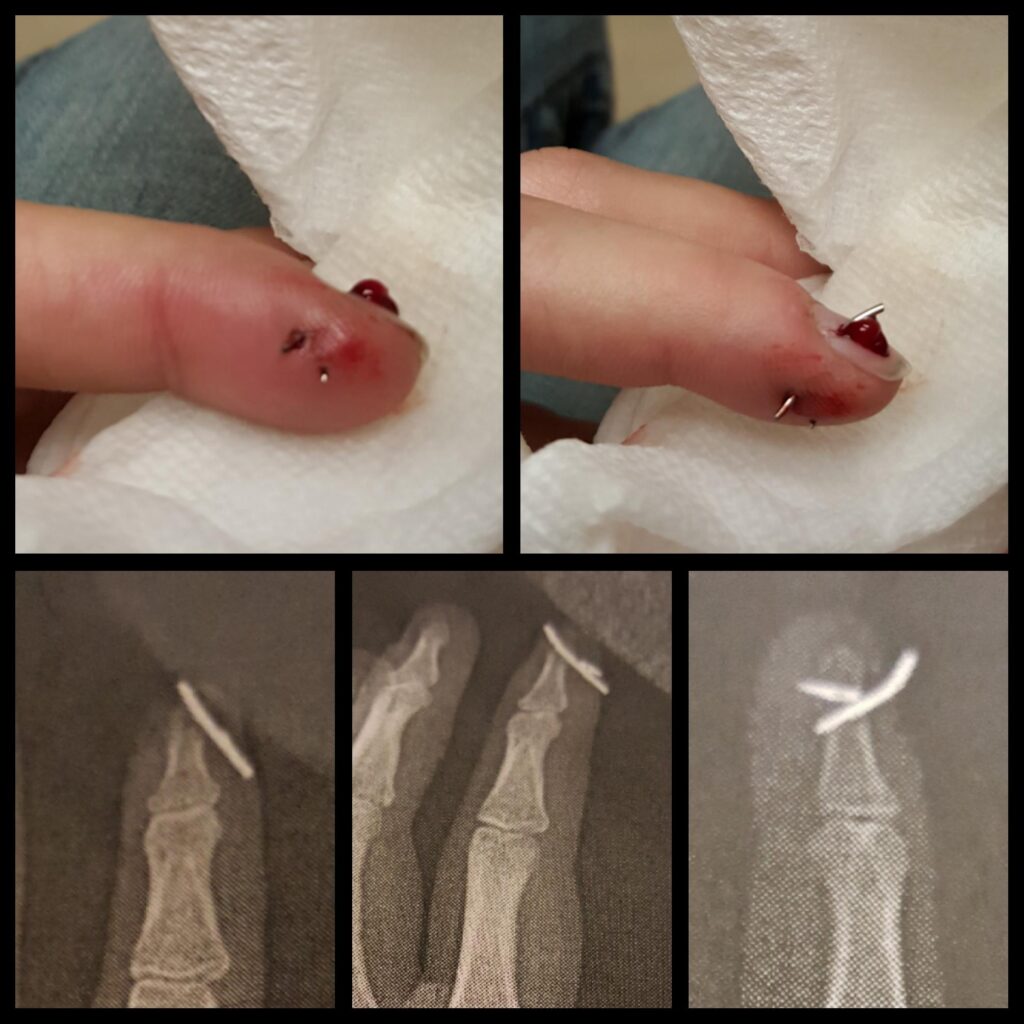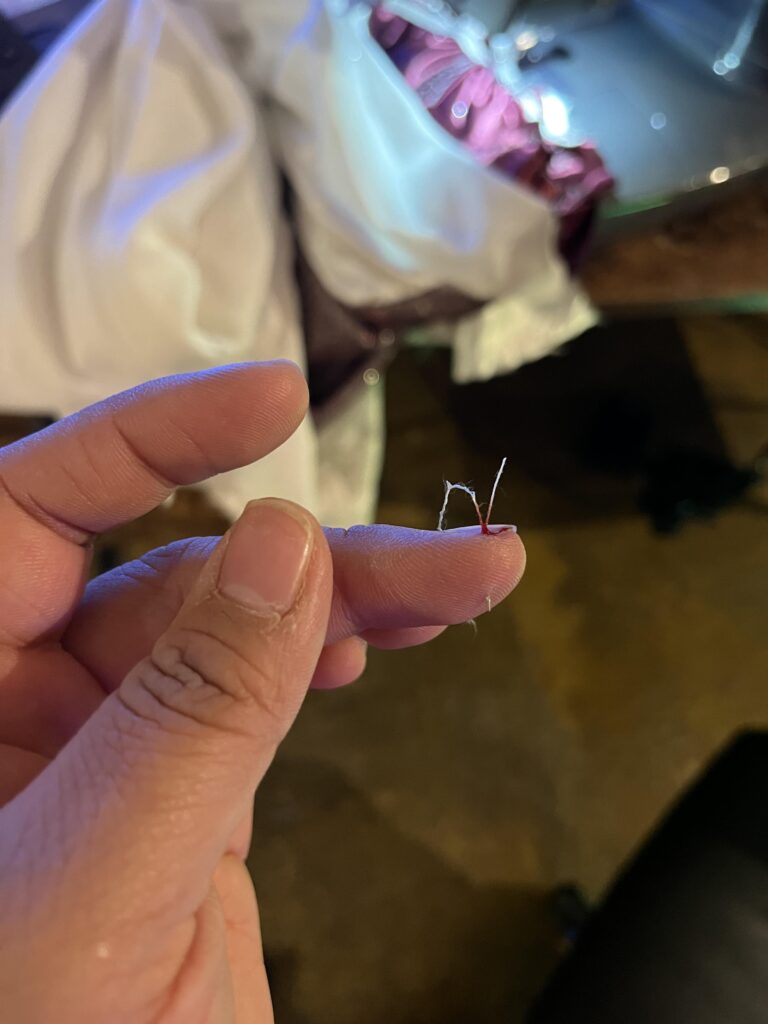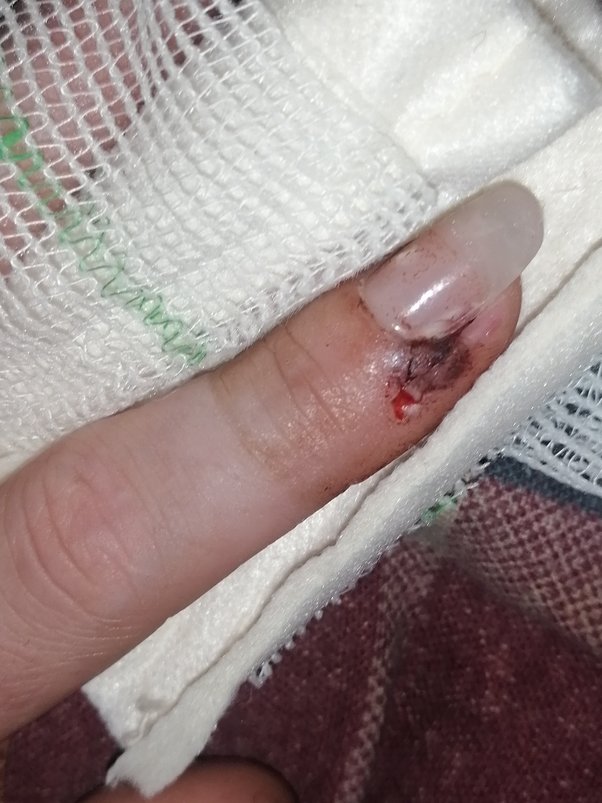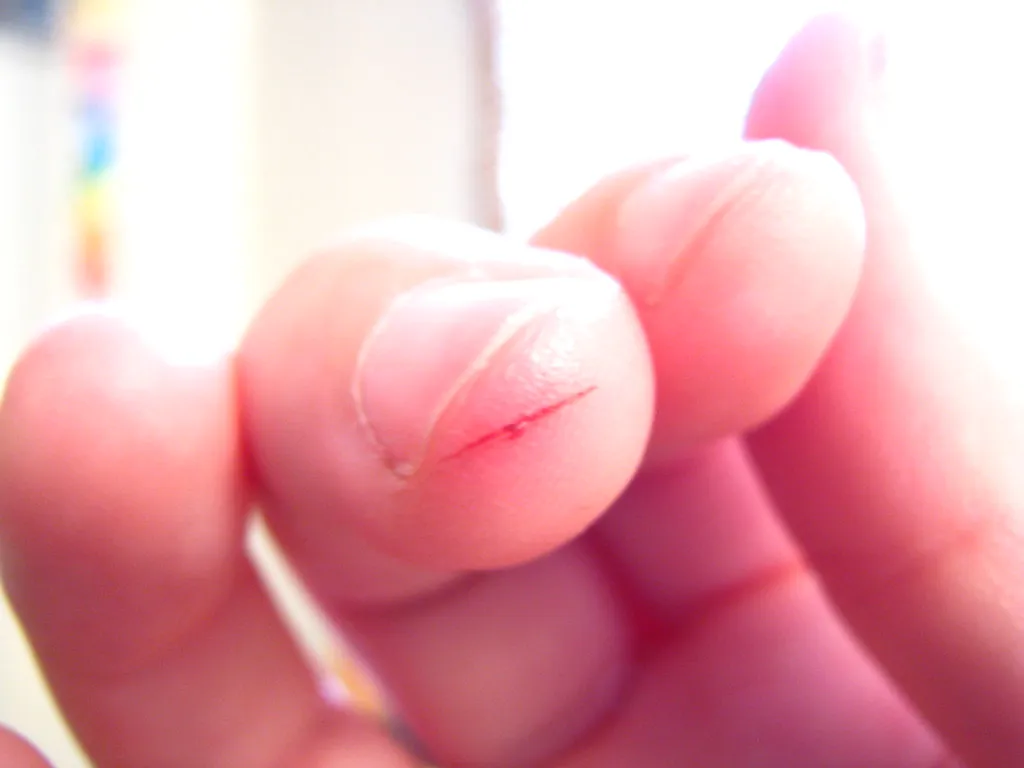In this article, we’ll explore the common injuries that can occur while sewing and provide tips on preventing them.
Sewing is a fun and rewarding hobby, but like any activity that involves sharp objects and repetitive motions, there’s a potential for injury.
Sewing involves working with various tools and materials, making it susceptible to a range of injuries. From minor accidents to more serious incidents, sewers need to be aware of potential hazards to ensure their safety.
Let’s take a look at some of the most common injuries that can happen while sewing, and how to prevent them from turning your project into a trip to the doctor.
Common Injuries
Sharp Shooters: Needles and Scissors
The two biggest culprits when it comes to sewing injuries are needles and scissors. Needles can pierce fingers if you’re not careful, and broken needles can become dangerous projectiles.
Scissors, of course, are sharp and can cause cuts if you slip.
Safety First: Here are some tips to keep your fingers safe:
- Always use a thimble to push the needle through the fabric.
- Keep your fingers away from the needle point when sewing.
- Dispose of broken needles properly in a sharps container.
- When using scissors, cut away from your body and keep your other hand well away from the blades.

Repetitive Strain Injuries (RSI)
Sewing often involves repetitive motions, which can lead to RSI in the wrists, hands, shoulders, and neck.
Ergonomics are Essential:
- Take breaks every 20-30 minutes to stretch and rest your hands and wrists.
- Maintain good posture while sewing, with your back straight and shoulders relaxed.
- Invest in an ergonomically designed chair and sewing table to keep your body in a comfortable position.
Needle Sticks and Pokes
One of the most common injuries in sewing is needle sticks and pokes. Accidentally pricking your finger with a needle can be painful and may even lead to infections if not treated properly.

Eye Strain and Fatigue
Hours spent focusing on intricate details can strain your eyes and lead to fatigue. Sewers often experience eye strain due to poor lighting or incorrect positioning of their work.
Repetitive Motion Injuries
Repetitive actions such as cutting or stitching can result in repetitive motion injuries like carpal tunnel syndrome or tendonitis. These conditions can cause pain and discomfort in the hands, wrists, and arms.
Burns from Hot Equipment
Working with hot equipment such as irons or steamers poses a risk of burns. Accidentally touching a heated surface or spilling hot liquids can cause serious burns if proper precautions are not taken.

Serious Injuries
Cuts and Lacerations
Sharp tools like scissors and rotary cutters can cause cuts and lacerations if not handled carefully. Deep cuts may require medical attention and can leave lasting scars if not treated promptly.

Puncture Wounds
Pins, needles, and other sharp objects used in sewing can cause puncture wounds if they penetrate the skin. These wounds may be small but can still lead to infections if not cleaned and treated properly.
Back and Neck Strain
Poor posture while sewing can result in back and neck strain. Sitting for extended periods without proper support can lead to chronic pain and discomfort.
Chemical Irritations
Some sewing materials and supplies contain chemicals that can cause skin irritations or allergic reactions. Contact with dyes, adhesives, or cleaning agents can lead to rashes or dermatitis if precautions are not taken.
Other Sewing Hazards
- Pins: Pins can prick your fingers or fall out and become stepping hazards. Use a pincushion and keep pins away from children and pets.
- Electrical Safety: Always unplug your sewing machine before threading a needle, changing the bobbin, or cleaning it. This will prevent accidental needle sticks.
Prevention and Safety Measures
To minimize the risk of injuries while sewing, it’s essential to follow proper safety protocols and take preventive measures.
Proper Ergonomics
Maintaining good posture and positioning while sewing can help prevent strain and fatigue. Ensure your workspace is set up ergonomically with adjustable chairs and proper lighting.
Wearing Protective Gear
Wearing protective gear such as gloves and safety glasses can help prevent injuries from sharp objects or hot equipment. Invest in quality equipment and replace worn-out gear regularly.
Taking Regular Breaks
Taking breaks during long sewing sessions can help prevent repetitive motion injuries and reduce eye strain. Use breaks to stretch and rest your eyes to avoid fatigue.
Maintaining Clean Workspaces
Keeping your workspace clean and organized can help prevent accidents and injuries. Dispose of sharp objects properly and keep flammable materials away from heat sources.
Seeking Medical Attention
If you sustain an injury while sewing, it’s essential to seek medical attention if needed. Even minor injuries like cuts or burns can lead to complications if not treated promptly.
FAQs
How can I prevent needle sticks while sewing?
Always be mindful of where your fingers are when sewing, and use tools like thimbles for added protection.
What should I do if I accidentally cut myself while sewing?
Clean the wound thoroughly with soap and water, apply pressure to stop bleeding, and seek medical attention if necessary.
Can eye strain from sewing lead to permanent damage?
Prolonged eye strain can cause temporary discomfort but is unlikely to cause permanent damage. However, it’s essential to rest your eyes regularly to prevent fatigue.
Are there any specific exercises to prevent repetitive motion injuries in sewing?
Yes, stretching exercises for the hands and wrists can help prevent repetitive motion injuries. Incorporate these exercises into your sewing routine to reduce strain.
How often should I replace my sewing equipment to ensure safety?
It’s essential to regularly inspect your sewing equipment for signs of wear and tear and replace any damaged or worn-out tools to ensure safety.
Conclusion
While sewing is a rewarding hobby or profession, it’s essential to be aware of the potential risks involved. By following safety guidelines, maintaining proper ergonomics, and taking preventive measures, you can enjoy sewing while minimizing the risk of injuries.
